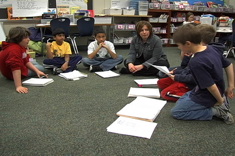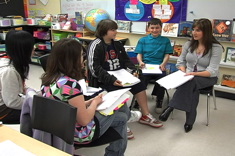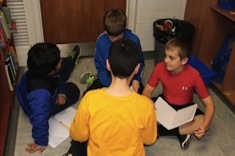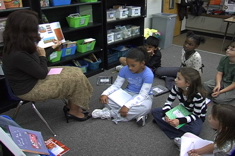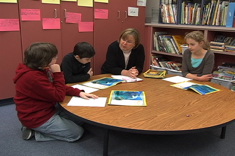A few years ago, my teenage daughter mentioned that she would like to learn to knit. I told her that I could teach her and that we should start with something easy, like a scarf. I was excited as I thought back to my childhood days — learning to crochet from one grandmother and learning to knit from my other grandmother. I had made several projects and knit several gifts as a child. I didn’t have fantastic skills, but I could knit. I had no doubt that I could teach my daughter to knit something simple.
We spent time on a Saturday morning at the local craft store choosing yarns, deciding on needle sizes, and talking through the scarves we would make. Two hours and $70 later, we were set. We came home with our supplies and were ready to go, planning to spend the rest of the day knitting.
After unpacking our supplies, it was time to get started. This is when the trouble began. I quickly realized that I had no idea how to start the knitting project on the needles. Had I forgotten this important skill in all of these years? I knew how to knit and purl but I couldn’t remember how to start.
At that moment, I had another childhood flashback. We visited my grandmother every Sunday, and she would help me with whatever new knitting project I was working on. I remembered my grandmother ALWAYS started my knitting needles, and she always ended my projects by finishing up the last row of the knitting and taking the project off the needles. It all came back to me — memory after memory of my grandmother starting my projects on the needles, and taking my finished projects off the needles. I sadly realized I really couldn’t teach my daughter how to knit, unless I could find someone to start the project for us . . . and then again to take the finished work off of the needles!
Knitting and Reading
Thinking back to my childhood knitting days, I realized that I really believed that I could knit. And I could, but not without the support to get started and finished with any project. As an adult I require support in order to actually knit anything. What good is being able to knit if I couldn’t really make anything by myself?
When people ask me about guided reading in grades 3-6, I think about my knitting experiences. My grandmother had the best intentions, and I learned a lot about knitting with her support. But I never gained the independence I needed to become an independent knitter. I worry that guided reading groups in grades 3-6 do the same thing for our older readers.
With so much of the curriculum mandated in many schools, teachers today are expected to guide their upper elementary readers through text just as teachers of primary grade students do. Instead of giving them support by guiding their reading and pulling small groups together to work on needed skills and strategies, we are expected to sit with small groups of children and guide them through the reading of a book. We are often expected to preview the book together, introduce vocabulary that might be tricky for them before they encounter it, and ask questions that will lead them to a better understanding. We guide conversations and let the kids in on the things they should understand about the book. We are with them every step of the way, through the entire book.
If we continue on this road of letting guided reading groups rule our classrooms throughout the elementary years, supporting readers at every turn instead of just the areas where they need support, we will never help our students reach independence.
Letting go as students progress is key to their independence in reading. Instead of previewing books with our students, it is more important that we teach them to preview on their own. Instead of leading the discussion so that students understand the things that we think are important, we need to turn over the discussion so that they can discuss the things that were important to them. And instead of asking any of those end-of-the book questions that are so common in many mandated programs, we need to help our students learn to respond in ways that are more personal and authentic. This is the only way we will create independent readers.
Since K-2 literacy has been such a focus in the past, it is not surprising that the things that have worked so well for early readers are being pushed up into the intermediate grades. But these things that work when students are learning to read often limit them and keep them from gaining independence as readers.
We owe it to our upper elementary students to support them in becoming independent readers. Rather than giving them too much support and guiding them through every book we read, they need the chance to work through books on their own. Instead of using small group time for guided reading — working through a book with a small group — it would be better to use that time to help students gain the skills necessary to become independent.
Alternatives to Guided Reading in the Upper Elementary Grades
Instead of having many guided reading groups in which students work through an entire text together with my guidance, I prefer to use my small-group time with students in ways to support them in moving toward independence. I believe that this is critical in grades 3-6. I focus my teaching on those things that will help them as readers when they are on their own. Most of the time when I pull a group, kids will all be reading a book of their choice. By teaching skills in the context of books they have chosen to read independently, they can learn the skill and then immediately practice it on their own. Some of the reasons I may pull groups together include:
- to learn how to preview a book to determine if it is just right;
- to figure out the meaning of unknown words in our reading;
- to make sense of dialogue embedded in text;
- to find strategies to keep track of the characters in the book;
- to combine text and visual information in nonfiction text; and
- to support thinking and predictions with evidence from the book.
Thinking back to my knitting days, my grandmother was supporting me by doing those things I couldn’t do on my own. But without the skills to start a project independently, knowing how to knit and purl really does me no good now. At some point, if I decide to knit something, I will have to give these things a try on my own. I will probably make some mistakes and create some awful projects. But I will be working toward independence. Our upper elementary students deserve the same chance to work toward independence. If we continue to do the things for them in guided reading groups that they should be able to do for themselves, they never will get that chance.

